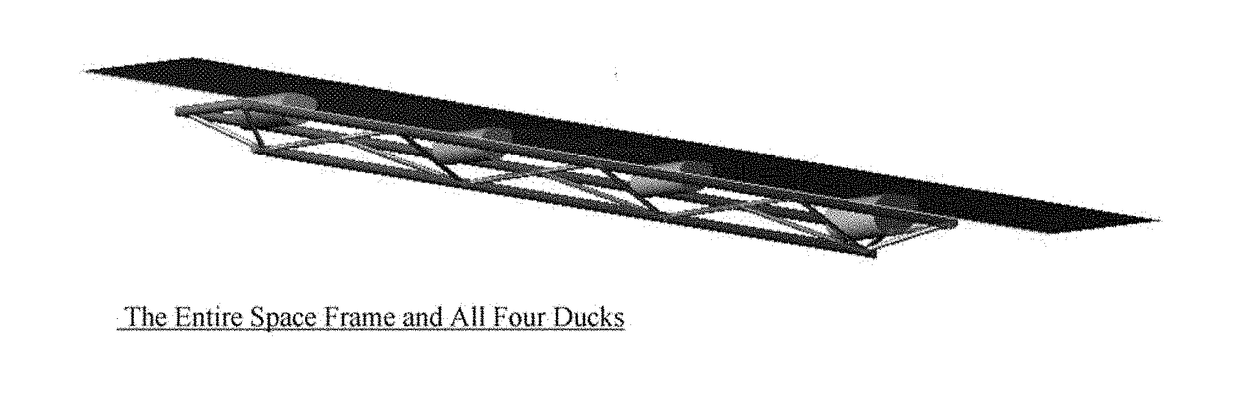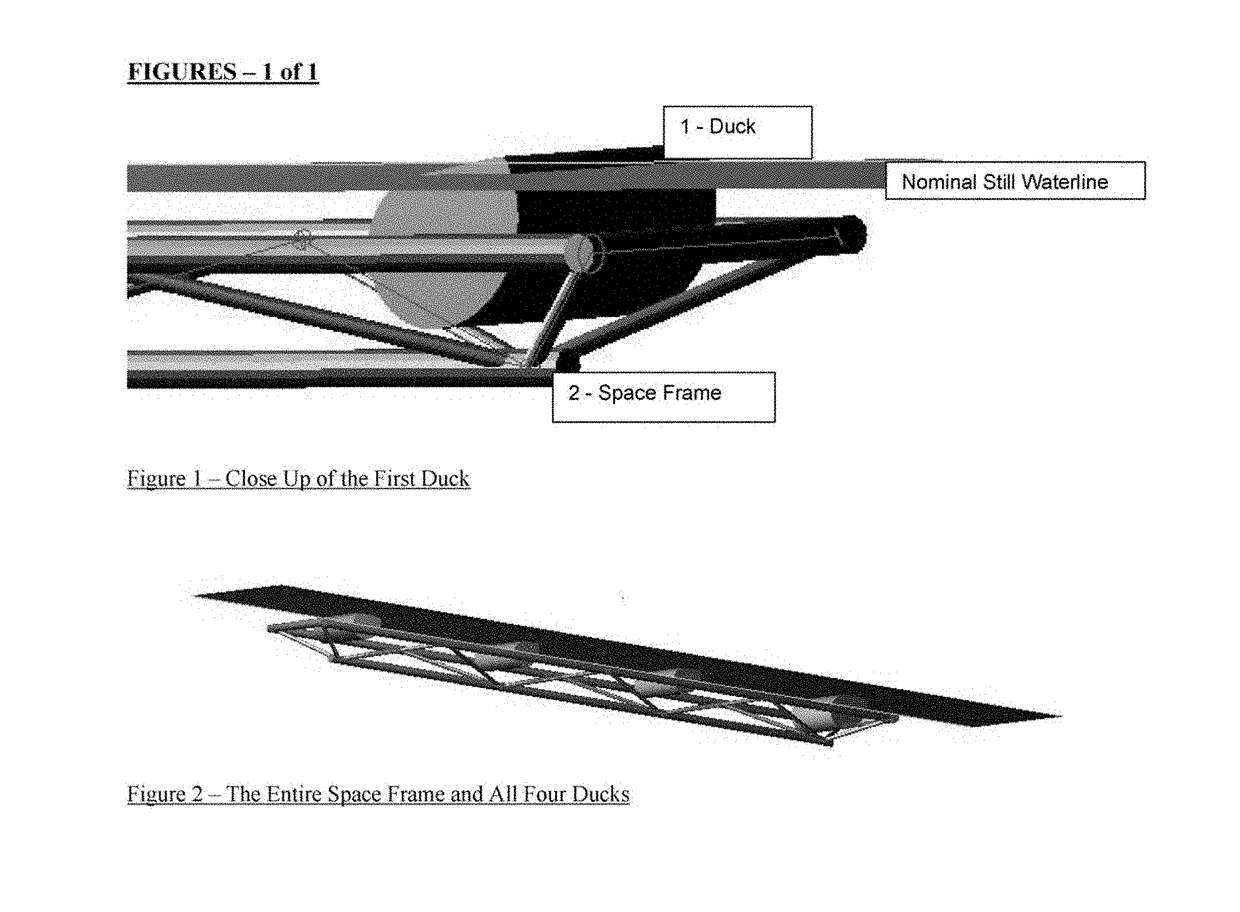Though there is a substantial body of prior art in wave energy conversion the challenge has principally been economic rather than technical (Akers et al).
Ocean waves are large, so that the devices will also be large.
This suggests that one proxy for cost is the total
mass of the device; the more massive, the more it will inevitably cost to build, and likely maintain.
A second issue is adequate strength to survive heavy weather which also adds cost.
First, a wave
energy device needs a reference to “push against”. Wave energy is contained in the movement of the water that makes up the wave, and the energy is in the difference in motion between the water and a point that does not move with the water in the particular portion of the wave that is being tapped for energy.
Second, waves have highly variable frequency and amplitude whereas most wave energy capture devices have a particular
natural frequency of motion at which wave energy is most efficiently captured.
Third, the mechanism that translates the capture device into useful power of some kind must necessarily restrain the device to some extent in order to capture energy. This restraint affects the
natural frequency and other responses of the excited body and potentially reduces the energy extracted. Simply put, if the power
takeoff mechanism restrains the
moving body too much in small waves, it doesn't move at all and no energy is extracted. If it doesn't restrain the
moving body enough in large waves, the excited body moves too readily and little energy is extracted. This implies that the restraint
system, which is also by definition the means of
power extraction needs to be controlled based on the wave being experienced by the device. This phenomena is similar to
impedance matching in electronic circuits.
Fourth, the motion of water particles comprising a wave is essentially a large
ellipse: as a wave passes, beginning in the trough, the water particles are moving in the opposite direction of the wave travel; as the crest approaches, the particles transition from horizontal to upward motion, then on the back of the crest they move downward and forward in the direction of the wave. This means half of the wave energy, through the whole cycle of a wave is in
vertical motion and half is in horizontal motion.
The economic problem of all of these devices is that they must be foundationed to the bottom, and such structures are expensive, especially in
deep water; a common rule of
thumb from the offshore oil industry is that the steel in a structure increases as the cube of
water depth.
Since waves are attenuated by shallow water, it is also clear that shallow water wave installations will not be as effective as
deep water ones, and that
deep water installations will be expensive.
The
low frequency of the spar due to its small waterplane area and large
mass means that it will be nearly motionless in most waves.
The problem with this type of device is that the large buoyant body is expensive and the amount of total
system mass per energy produced is limited.
In addition, it can produce large forces in heavy weather, particularly on its
mooring system.
For example, Wood teaches a
linear array of moving bodies between two floating hulls, but this has substantial non-moving “dead” mass (the hulls) which has to be purchased, maintained, moored and protected in storms.
This eliminates the dead large reference body but problem of this approach is that the devices themselves must be very massive and hence expensive.
These devices are also subject to overloading in severe waves and some such devices have failed when the hinges were overloaded.
They also mainly extract energy only from the wave slope vice the actual particle motions and often need to have large mass so once again energy per mass is limited.
However, all prior art involving Salter's Ducks has used bottom fixed multi-point moorings, rigid bottom fixed structures or various large reference masses.
It is not clear that either prior art device is intended to provide a reference point for reacting device movement, and it will not reliably do so because it is likely that the Ducks will be in phase or close to in phase across a
wave crest much of the time, so this is not an effective strategy to provide reaction for energy extraction.
This means that some prior art approaches may be useful, but they do not necessarily fully address all environments economically, particularly those with relatively large waves, and relatively deep water, such as most of the West Coast of the U.S. and Canada, which also happen to be rich in terms of wave
energy resources.
 Login to View More
Login to View More  Login to View More
Login to View More 

